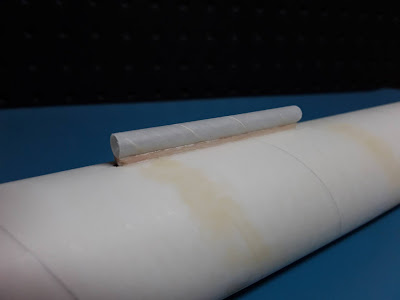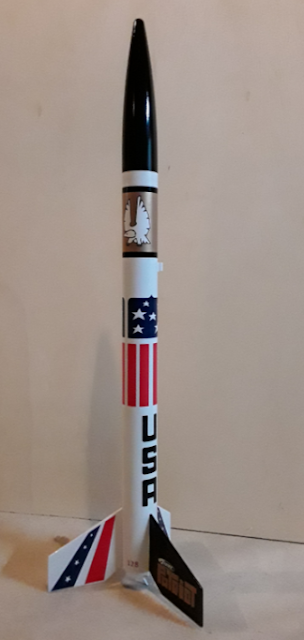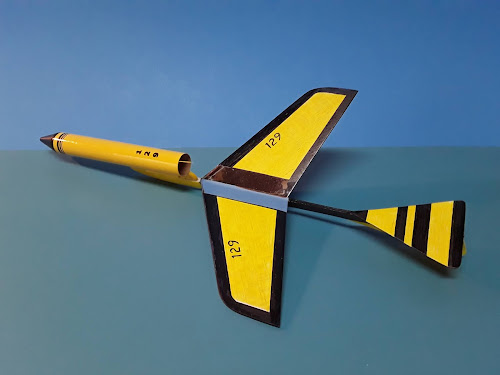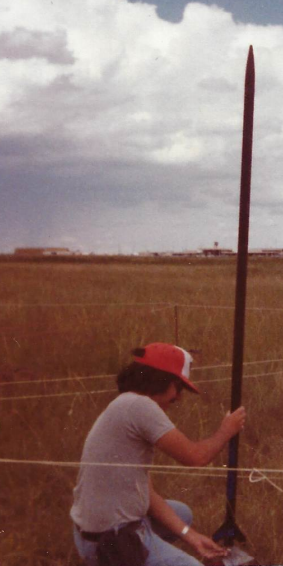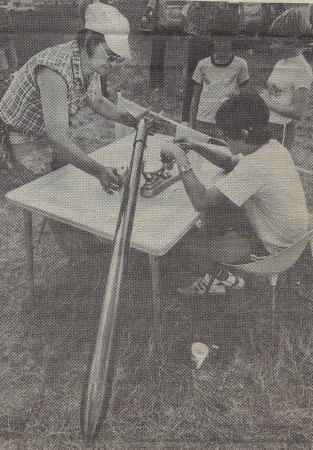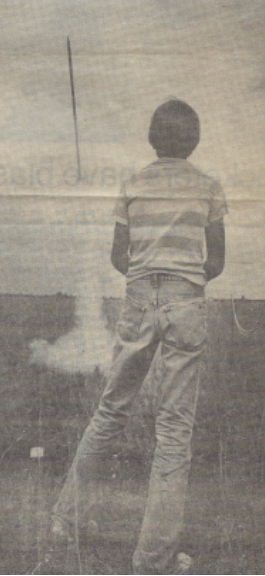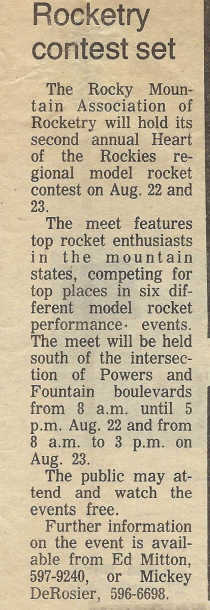Having just finished a build of a Wasp boost/glider, I decide to dust off the large binder containing the ancient archives of my 'old fleet' days.
A Wasp was one of my earlier glider models, built at a time when I was still but a neophyte rocketeer.
The records show a total of seven flights on the bird, none of which were particularly successful. Written commentaries described the model's glide performance with such terms as 'flip', 'flop', 'flutter', and 'stall'.
At least the word 'prang' was never employed.
I do recall that old number 29 would glide very nicely during hand launch tosses, but never worked properly under rocket power.
Again, in those days, I didn't know a heck of a lot about glider construction and trimming.
The Wasp was likely built without any negative incidence on the horizontal stab, plus I strongly suspect that the main wing panels were warped. Add to this the fact that the glider was finished with spray enamel paint.
With all of that going against it, the poor bird didn't stand a chance at transitioning into a good glide.
Boost phase was no problem, since I built the pop pod longer than what the plans called out. Boost CG was well ahead of the glider wings, making the model very stable.
A short anecdote involving my Wasp B/G was written up in a sport meet report published in a 1975 issue of the Skywatchers/ROMAR club newsletter.
Members of the Rapihawks Rocket Club of Colorado Springs were guest visitors to this particular Skywatchers meet.
Dr. Warren Layfield and I both happened to be off to the side of the launch pad area lobbing gliders around to adjust the trim. Mine, of course, was the Wasp. A little friendly discussion ensued about whose glider would perform better. A small competition was in the making....
Unfortunately, both of us chickened out from flying our gliders under power because of windy conditions that had begun to pick up. We agreed to pursue the dispute another day.
Warren, if you are reading this, the challenge is still on....


